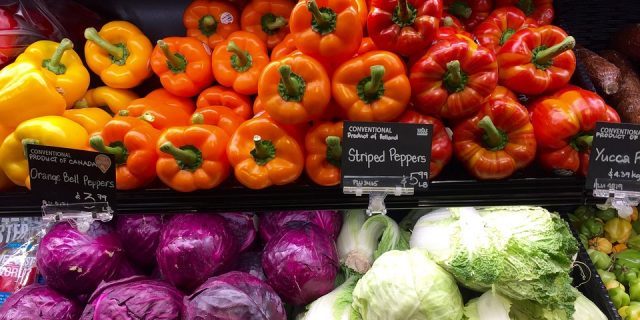
I really want to eat healthy, but it’s so expensive! How do I stay healthy and not go broke?
It’s great that you want to eat healthier and are thinking through how to do it! Trying to eat healthy on a budget can seem intimidating. The good news is that there are a lot of ways to get all the vitamins, minerals, protein and fiber that you need without breaking the bank.
You’ve probably already realized that the most affordable food options usually aren’t the healthiest. Fast food can be cheap, easy and satisfying, but it’s full of fat, sodium and empty calories. Making your own meals is the best way to eat healthy and cheap. It’s also a great opportunity to learn about food and build some cooking skills!
Healthy food doesn’t have to mean organic, gluten-free, “natural,” or any other marketing label that companies use to sell their products. Instead, concentrate on some healthy eating basics: go for whole grains and complex carbohydrates, lean proteins and lots of fruits and vegetables.
For complex carbs, look for whole wheat bread, brown or wild rice, whole wheat pasta, steel cut or slow cook oatmeal, sweet potatoes, quinoa, bulgur, or buckwheat. For lean proteins, try chicken, beans, eggs, lentils or tuna. Eggs and beans are especially cheap. Fresh fruits and vegetables are delicious but can get expensive. They’ll be cheaper if you buy them in season. If fresh produce is out of your budget, go for frozen fruits and veggies—they’re just as healthy as fresh ones, and often half the price!
Here are some other tips for eating healthy on a budget:
- Grocery stores’ prices vary a ton. Do some comparison shopping. One store may have more affordable produce, and another may have cheaper bags of rice. Do some googling to see if there are discount supermarkets near you.
- Check out street carts and farmers markets—some have relatively cheap produce or baked goods. You may be able to get a good deal if you go later in the day.
- Look for coupons—you can find them online or in local papers.
- Use savings cards, where you can get access to special sales.
- If you can afford it, buy in bulk. It’ll save you money in the long run.
- Go to food pantries! They provide free, unprepared food. You can find more info on food pantries in NYC at Hunger Free America and Food Bank NYC.
- Specialty supermarkets often have good deals on foods and spices from different cultures. If you have Indian, Chinese, Korean, Greek or other specialty supermarkets near you, check them out.
- Check out MyPlate for more healthy eating tips.
To avoid wasting food, plan your meals around what you have in the kitchen, instead of buying a whole new set of ingredients for a completely different meal. This requires planning your meals in advance, which can sometimes feel like a pain. Make it part of a Sunday ritual. The more you practice, the easier it’ll be. Look up meal planning guides like this one if you’re not sure where to start.
You can also check out Leanne Brown’s free online cookbook, Good and Cheap. It has tons of tips for saving money, and lots of simple recipes—many of which are quite healthy!
Keep in mind that portion control is also an important part of a healthy diet. Look into what one “serving” looks like for the foods you eat. Sometimes you’ll find that you’re eating a lot more than what is recommended! You may love brown rice, but eating four servings of it per meal isn’t super healthy.
To be the healthiest version of yourself, don’t forget to get plenty of exercise (60 minutes per day) and sleep, and take care of your emotional health, too!
If you have any other questions about how to be the healthiest version of yourself, make an appointment at the Mount Sinai Adolescent Health Center for a free appointment with an adolescent medicine specialist and/or a registered dietitian!


